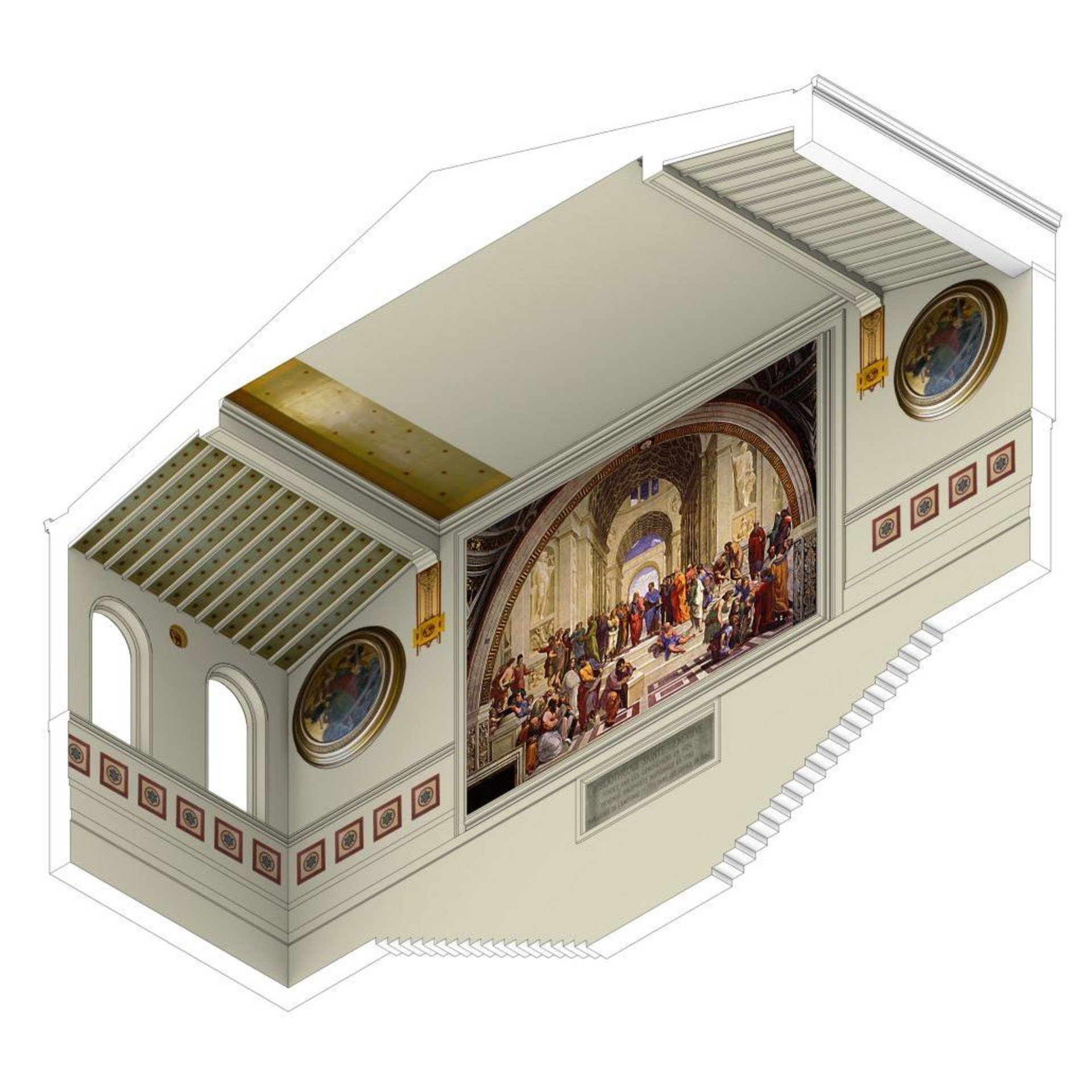Colour and Architecture
In the reality of our daily environments, architecture and colour depend on each other. The way in which these two phenomena interact and how they can be supported by design is a research question relevant to both science and practice.
Duration
January 2012 - October 2017Project Manager
Research project by Martijn Schlatmann
Up until now, specific colour themes have been studied extensively in academic disciplines including natural sciences, psychology, physiology and art history. In the field of architecture, however, colour was mainly subject to private observations and compendia. Therefore, a coherent analysis and explanation of changing interplays between architecture and colour in history remains out of sight.
Still, it is well known that colour was involved in major paradigm shifts in architectural history. The discovery of colour on ancient temples in the early nineteenth century is an emblematic example of such a turn. Up until that moment, neo-classicist theory dominated architectural discourse and practice: form prevailed over colour, following the supposed purity and clarity of ancient examples. The research on the polychromy of antiquity was joined by a debate on tectonics, which established the relevance of colour for architecture. Painted colour and mosaics – formerly restricted to interiors – were now, inspired by exotic and oriental examples, displayed at exteriors.
A range of opportunities was unlocked for the finishing of buildings in industrialising cities, where modern construction methods and new materials were being applied. During the nineteenth century, however, the architectural and theoretical efforts concerning colour still started at the structural logic of a building. This changed only when architecture became part of the experience of metropolitan cities as modern phenomena, and around the turn of the century, the historical avant-garde (Le Corbusier, Van Doesburg etc) explicitly revalued colour to a more prominent factor in architectural and urban design. In the second part of the century, modernism gradually gave way to postmodernism and today, in the USA as well as in Europe, a diversity of colour motives exists in architectural design. Some architects like emphasize the possibility of architecture mirroring pop culture, while at the same time, others continue a tradition of complementarity of form and colour.
In accordance to this history of paradigm shifts, the research is focused on the course of events between about 1800 and today. Geographically it is demarcated to Europe and the USA, creating a culturally coherent section of theory and practice from the entire subject of architecture and colour. Within this framework, the interplay of colour and form in architectural discourse will be examined confronting findings with two neighbouring topics. This concerns on the one hand simultaneous developments in philosophy and science in the widest sense, and a series of relevant case studies on the other. With this latter study, of buildings and places, will be tested whether or not theory mirrors in practice. The combination of literature study and case studies supports the ambition of a coherent understanding and integral analysis and explanation of the multiple interactions of colour and form in architecture.

Up until now, specific colour themes have been studied extensively in academic disciplines including natural sciences, psychology, physiology and art history. In the field of architecture, however, colour was mainly subject to private observations and compendia. Therefore, a coherent analysis and explanation of changing interplays between architecture and colour in history remains out of sight.
Still, it is well known that colour was involved in major paradigm shifts in architectural history. The discovery of colour on ancient temples in the early nineteenth century is an emblematic example of such a turn. Up until that moment, neo-classicist theory dominated architectural discourse and practice: form prevailed over colour, following the supposed purity and clarity of ancient examples. The research on the polychromy of antiquity was joined by a debate on tectonics, which established the relevance of colour for architecture. Painted colour and mosaics – formerly restricted to interiors – were now, inspired by exotic and oriental examples, displayed at exteriors.
A range of opportunities was unlocked for the finishing of buildings in industrialising cities, where modern construction methods and new materials were being applied. During the nineteenth century, however, the architectural and theoretical efforts concerning colour still started at the structural logic of a building. This changed only when architecture became part of the experience of metropolitan cities as modern phenomena, and around the turn of the century, the historical avant-garde (Le Corbusier, Van Doesburg etc) explicitly revalued colour to a more prominent factor in architectural and urban design. In the second part of the century, modernism gradually gave way to postmodernism and today, in the USA as well as in Europe, a diversity of colour motives exists in architectural design. Some architects like emphasize the possibility of architecture mirroring pop culture, while at the same time, others continue a tradition of complementarity of form and colour.
In accordance to this history of paradigm shifts, the research is focused on the course of events between about 1800 and today. Geographically it is demarcated to Europe and the USA, creating a culturally coherent section of theory and practice from the entire subject of architecture and colour. Within this framework, the interplay of colour and form in architectural discourse will be examined confronting findings with two neighbouring topics. This concerns on the one hand simultaneous developments in philosophy and science in the widest sense, and a series of relevant case studies on the other. With this latter study, of buildings and places, will be tested whether or not theory mirrors in practice. The combination of literature study and case studies supports the ambition of a coherent understanding and integral analysis and explanation of the multiple interactions of colour and form in architecture.